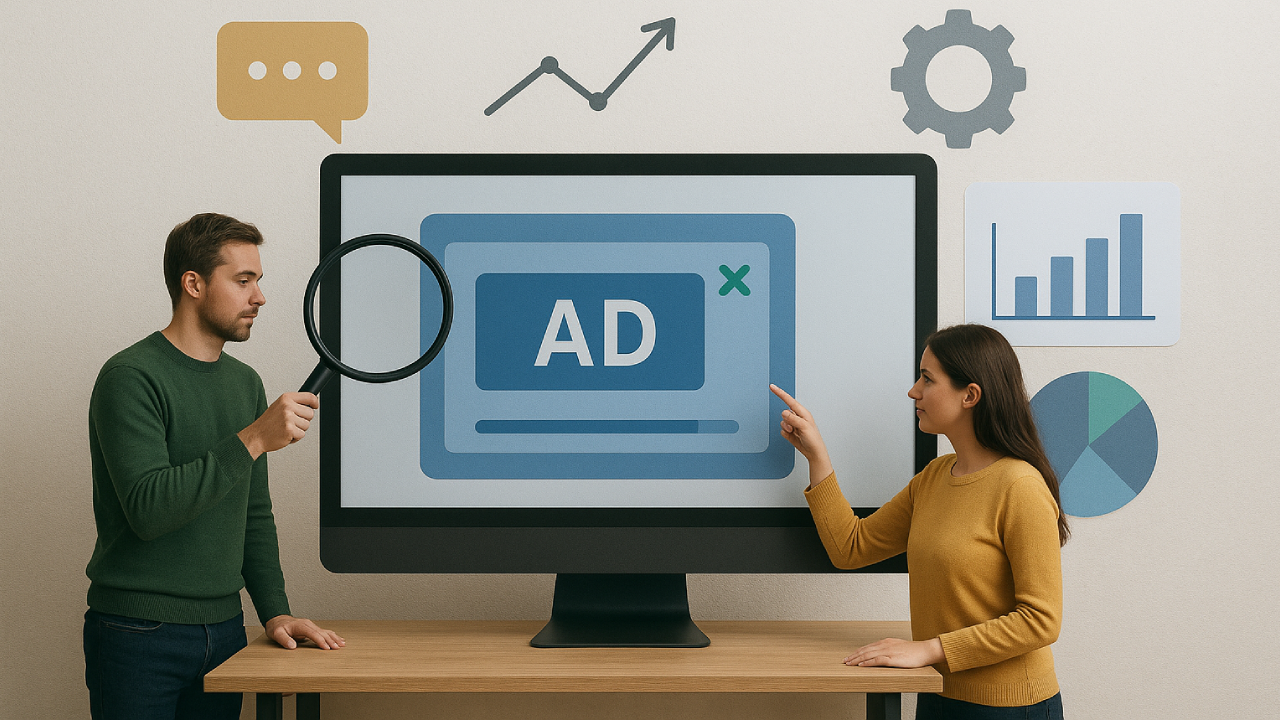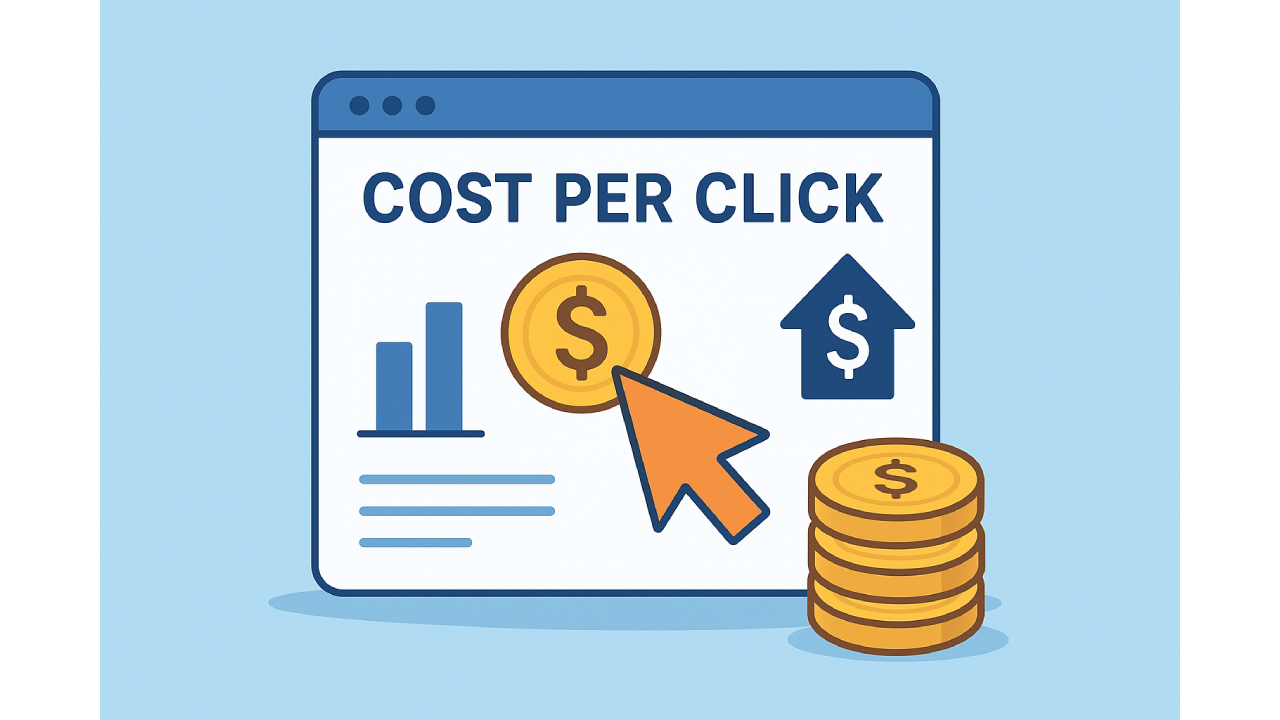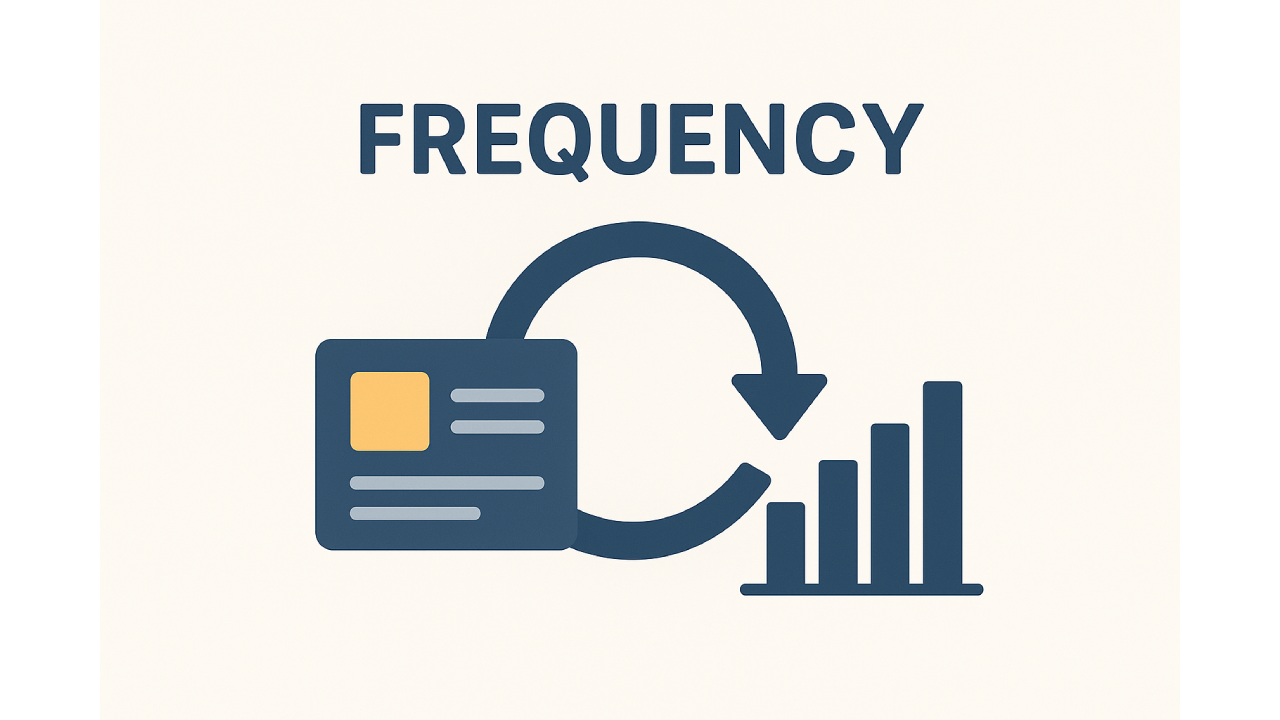
In the world of digital advertising, numbers tell stories. Not just any stories, stories of attention, engagement, persuasion and conversion. Whether you’re a startup testing the waters or a seasoned brand scaling campaigns, understanding key metrics is non-negotiable.
If you’re working with an advertising agency in Ahmedabad, chances are you’re already hearing terms like CPC, CPM and CPA tossed around. But what do they really mean? And more importantly, how do they help you make smarter decisions?
These metrics are more than jargon; they’re the compass that guides your budget, targeting and creative strategy. When interpreted correctly, they reveal what’s working, what’s wasting money and where the real opportunities lie. Mastering them can turn your campaigns from guesswork into a data-driven growth engine.
Table of Contents.
- Why Understanding Advertising Metrics Matters
- Clicks – The First Signal of Engagement
- CPC (Cost-per-click) – The Price Of Attention
- CPM (Cost Per Thousand Impressions) – The Cost of Visibility
- Frequency – The Subtle Power of Repetition
- Cost per Result – Tracking the Real Wins
- CPA (Cost Per Acquisition) – Measuring Customer Conversion Costs
- Campaign Strategy Beyond the Metrics
- Common Pitfalls to Avoid
- Additional Tips for Using These Metrics Effectively
- Conclusion
- FAQs
Why Understanding Advertising Metrics Matters
You’re running an ad campaign but have no idea how many people saw it, clicked on it or bought because of it. That’s like driving cross-country with no map, no GPS and hoping for the best.
Advertising metrics are your marketing compass. Here’s why they matter so much:
- Smarter spending: They help you put your budget where it works best.
- Creative reality check: They show whether your ad content and targeting are hitting the mark.
- Growth roadmap: They guide you on when and how to scale your campaigns.
- Apples-to-apples comparisons: They let you measure results across different platforms.
Without metrics, you’re guessing. With them, you’re making informed decisions that save you time, money and frustration. They not only tell you where you are but also point you toward the most efficient route to your goals. Even better, they help you spot problems early, so you can course-correct before small issues turn into costly mistakes.
In short, metrics turn marketing from a shot in the dark into a well-aimed strategy.
Clicks – The First Signal of Engagement
Clicks are exactly what they sound like: the number of times people tap or click on your ad. It’s one of the simplest engagement metrics, but it packs a lot of insight into how well your ad is connecting with your audience.
What clicks can tell you:
- How appealing and relevant your ad is.
- Whether your targeting is on point.
- Which ad variations are winning the performance race?
Why clicks matter:
- They’re easy to measure and understand.
- They give you instant feedback on how people are reacting.
If you’re getting lots of clicks but few conversions, that’s a sign your ad is interesting, but your landing page may need work. High click volume can also speed up how quickly platforms like Google Ads or Facebook learn and optimise your campaign delivery.
On the flip side, a low click-through rate (CTR) is your cue to experiment, try fresh visuals, sharpen your messaging or adjust your audience targeting to grab more attention.
CPC (Cost-per-click) – The Price Of Attention

CPC is one of the most common and important metrics in digital advertising. It tells you exactly how much you’re paying every time someone clicks on your ad and lands on your website, landing page or offer. Think of it as the price tag for a single moment of attention from a potential customer.
What you can use CPC for:
- Compare campaign efficiency: A lower CPC usually means you’re attracting visitors more cost-effectively. A higher CPC could point to heavy competition or targeting that needs fine-tuning.
- Evaluate targeting effectiveness: If your CPC starts creeping up, it might mean your ads aren’t resonating with your audience, time to revisit your targeting or messaging.
- Benchmark performance: See how your ads stack up against industry averages to ensure you’re staying competitive.
Why CPC matters:
- Shows relevance and engagement: Platforms like Google and Meta often reward highly relevant ads with lower CPCs; better ads can cost you less.
- Helps manage budgets: If your goal is to drive traffic, CPC makes it easy to estimate how much you’ll spend to hit your visitor targets.
- Gives actionable insights: Tracking CPC trends over time shows whether your optimisations are paying off.
One important note: CPC shouldn’t be viewed in isolation. A low CPC might look great on paper, but if those clicks don’t turn into leads or sales, it’s just cheap traffic, not growth. The real magic happens when you balance CPC with deeper metrics like CPA (Cost per Acquisition) and ROAS (Return on Ad Spend) to make sure you’re paying the right price for actions that truly matter
CPM (Cost Per Thousand Impressions) – The Cost of Visibility

CPM measures how much you’re paying for every 1,000 times your ad is shown, whether people click on it or not. It’s less about driving immediate action and more about getting your brand in front of as many eyes as possible.
What you can use CPM for:
- Gauge audience reach: Understand the cost of showing your ad to large groups of people.
- Compare visibility efficiency: See which channels or campaigns give you the most exposure for your spend.
Why CPM matters:
- Perfect for awareness campaigns: When your main goal is visibility, CPM is the go-to metric.
- Budgeting made easy: Great for planning large-scale campaigns where reach is the priority.
- Helps forecast reach: Lets you estimate how far your message can travel within a set budget.
A low CPM means you’re stretching your ad dollars further, reaching more people for less. That’s especially valuable for brand-building moments, like product launches, seasonal promotions or remarketing campaigns to stay top-of-mind.
Just remember: CPM is about being seen. But being seen without sparking engagement can quickly turn into background noise. Pair it with metrics like CTR (Click-Through Rate) or conversions to make sure your visibility is making an impact.
Frequency – The Subtle Power of Repetition

Frequency measures how many times, on average, each person sees your ad over a set period. It’s all about balance; show your ad too few times and people may forget you; show it too often and you risk annoying or boring them. The “ideal” frequency depends on your campaign goals, industry and message.
What you can use Frequency for:
- Manage exposure levels: Keep your brand visible without crossing into oversaturation.
- Prevent fatigue and ad blindness: Avoid the point where your audience starts tuning out.
Why Frequency matters:
- Boosts brand recall: Repetition helps your message stick in people’s minds.
- Improves conversion chances: When timed and targeted well, repeated exposure can turn interest into action.
- Signals when to refresh creatives: Rising frequency with falling engagement often means it’s time to shake things up.
When managed well, frequency can guide prospects smoothly down the path from casual viewer, familiar face, loyal customer. Many advertisers use frequency caps, especially in retargeting campaigns, to keep ads fresh, relevant and welcome.
Cost per Result – Tracking the Real Wins

Cost per Result shows how much you’re spending to achieve a single desired outcome, based on the exact goal you’ve set for your campaign. That could be generating a lead, making a sale, getting video views or driving sign-ups. It’s one of the clearest ways to connect your ad spend to real, measurable outcomes.
What you can use Cost per Result for:
- Measure true cost of success: Understand exactly what it takes to achieve your objective.
- Compare efficiency: See which campaigns, ad sets or platforms deliver the best results for your budget.
Why Cost per Result matters:
Goal-focused : You’re tracking the cost of the exact action you care about most.Straightforward ROI measurement : Makes it easy to judge if your spend is paying off.Data-driven optimisation : Helps you prioritise high-performing ads and cut the ones that aren’t pulling their weight.
By zooming in on the cost of each result, you can fine-tune your budgets, double down on what’s working and eliminate waste from underperformers. For example, if your goal is lead generation, your cost per result should reflect cost per lead, not just clicks or engagement. That way, every rupee works harder for your business.
CPA (Cost Per Acquisition) – Measuring Customer Conversion Costs

CPA tells you exactly how much you’re spending to acquire a customer or complete a key conversion, whether that’s a sale, subscription or sign-up. Unlike CPC or CPM, which focus on engagement or visibility, CPA is all about outcomes. It measures the real cost of turning interest into action.
What you can use CPA for:
- Calculate profitability: Compare acquisition costs to your customer lifetime value (CLV).
- Guide scaling decisions: Identify which campaigns, audiences, or channels deserve more investment.
- Test offers and funnels: See which promotions or sales paths convert most efficiently.
Why CPA matters:
- Direct growth link: It connects your ad spend directly to business results.
- Performance-driven focus: Perfect for campaigns where conversions are the main goal.
- Clear ROI insight: Quickly shows whether your marketing is delivering a profitable return.
A low CPA means you’re converting efficiently and getting more customers for less. A high CPA, on the other hand, could point to issues in targeting, ad messaging or the conversion process itself. By tracking CPA over time, you can spot trends, make adjustments and invest more confidently in strategies that bring in customers at a sustainable cost.
Campaign Strategy Beyond the Metrics
Metrics are critical, but they’re only part of the story. Numbers tell you what’s happening; your strategy explains why it’s happening and how to make it better. The most successful campaigns combine data with creativity, psychology and a deep understanding of the audience.
Core elements of winning campaigns:
- Audience Understanding: Know exactly who you’re speaking to, their needs, pain points and motivations, and craft a message that truly connects.
- Creative Excellence: Align copy, visuals and design so they work together to grab attention and inspire action.
- Optimised Landing Pages: Even the best ad can fail if it leads to a page that isn’t persuasive, clear and easy to navigate.
- Smart Budget Allocation: Invest where the data shows the strongest performance, specific audiences, creatives and platforms.
- Testing & Refining: Treat campaigns like ongoing experiments. Test variations, analyse results and keep improving.
When you pair a strong strategy with accurate metrics, you create a powerful feedback loop; each campaign becomes sharper, more efficient and more impactful than the last.
Common Pitfalls to Avoid
Even with the right data, it’s easy to misstep if you’re not looking at the bigger picture. Some of the most common mistakes include:
- Focusing only on “vanity metrics” like clicks or impressions without tracking conversions and actual ROI.
- Letting frequency climb too high without refreshing creatives can cause audience fatigue and lower engagement.
- Ignoring post-click performance, such as landing page load time, design or messaging alignment.
- Assuming past success guarantees future results , without accounting for changes in audience behaviour, competition or market trends.
Working with an experienced advertising partner, such as a well-established advertising agency in Ahmedabad, can help you avoid these pitfalls. The right team will not only monitor your campaigns but also interpret the numbers, spot early warning signs and make timely adjustments to keep your budget delivering maximum impact.
Additional Tips for Using These Metrics Effectively
- Look at trends, not isolated numbers: A dip in performance on a single day isn’t necessarily a failure. Watch for patterns over weeks or months to get a true picture.
- Balance short-term wins with long-term brand goals: If your sales cycle is long, awareness and engagement metrics are just as important as immediate conversions.
- Use retargeting wisely: Re-engage people who clicked but didn’t convert with tailored offers, reminders or fresh creatives.
- Refresh creatives regularly: Keeping your visuals and copy updated helps maintain engagement, improve CTR and control frequency.
- Test multiple audiences: Avoid over-reliance on a single targeting group. Experiment with lookalike audiences, interest-based segments and demographic variations.
- Monitor cross-platform performance: Metrics may vary across channels; what works on Facebook may not perform the same on Google Ads or LinkedIn.
Conclusion
In digital advertising, metrics aren’t just numbers; they’re signals. They reveal what’s working, what needs adjusting and where your next opportunity lies. Tracking CPC keeps your costs in check, monitoring Frequency helps avoid audience fatigue and measuring CPA ensures your campaigns stay profitable.
When you combine those insights with strong creative, precise targeting and ongoing testing, you create the foundation for campaigns that consistently perform.
Still struggling to understand the metrics? Let us handle your metrics so you can focus on growing your business. Get in touch with us today!” Partnering with an experienced advertising agency in Ahmedabad can bring sharper data interpretation, smarter strategy adjustments and better returns on every rupee invested.



